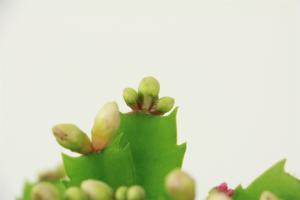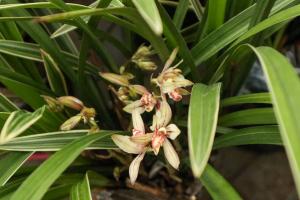Can Plant Tendrils Climb Trees?
Plant tendrils are thin and flexible structures that plants use to climb and support themselves. They can be found in many types of plants, including peas, beans, grapes, and ivy. But can these tendrils climb trees? The answer is yes, and in this article, we'll explore how they do it!
What are Plant Tendrils?
Plant tendrils are specialized structures that plants use to climb and support themselves. They are often thin and flexible, and they can come in different shapes and sizes depending on the plant species. Tendrils are usually found near the ends of the plant's stems, and they are used to attach the plant to a support structure.
There are two basic types of plant tendrils: twining tendrils and adhesive tendrils. Twining tendrils work by wrapping around a support structure, while adhesive tendrils have special adhesives or suction cups that allow them to stick to a surface.
How do Plant Tendrils Climb Trees?
When it comes to climbing trees, most plant tendril species use the twining method. Twining tendrils have a natural tendency to curl and spiral around any object they come into contact with. This allows them to wrap around and climb up trees, poles, wires, and other support structures.
Plant tendrils can also sense the support structure they are climbing, and they can adjust their growth accordingly. For example, if a tendril encounters a rough surface, it will send out more tendrils to create a stronger grip. On the other hand, if the surface is smooth, the tendril may produce less growth.
Benefits of Clinging to Trees
Climbing trees can be beneficial for plants in several ways. For one, it allows them to reach more sunlight, which is essential for photosynthesis. Additionally, climbing trees can help protect plants from herbivores and other predators that may be lurking on the ground.
Climbing trees can also be an advantage in terms of pollination. By climbing high, plants can release their pollen into the air, where it can travel farther distances and reach more potential pollinators.
The Downside to Climbing Trees
While climbing trees can be beneficial for plants in many ways, it can also come with a downside. For example, if a plant becomes too dependent on a tree for support, it may have trouble growing and reproducing in other areas. Additionally, climbing trees can be risky for plants that are not adapted to high altitudes or extreme weather conditions.
Conclusion
In conclusion, plant tendrils can indeed climb trees, using their natural twining abilities to wrap around and climb up the trunk. Climbing trees can offer many benefits for plants, including increased sunlight, protection from predators, and improved pollination. However, plants that become too dependent on a specific tree for support may have trouble growing and reproducing elsewhere. Ultimately, the ability to climb trees is just one of many adaptations that plants have developed to survive and thrive in their environment.

 how many times do yo...
how many times do yo... how many planted tre...
how many planted tre... how many pine trees ...
how many pine trees ... how many pecan trees...
how many pecan trees... how many plants comp...
how many plants comp... how many plants can ...
how many plants can ... how many plants and ...
how many plants and ... how many pepper plan...
how many pepper plan...






























